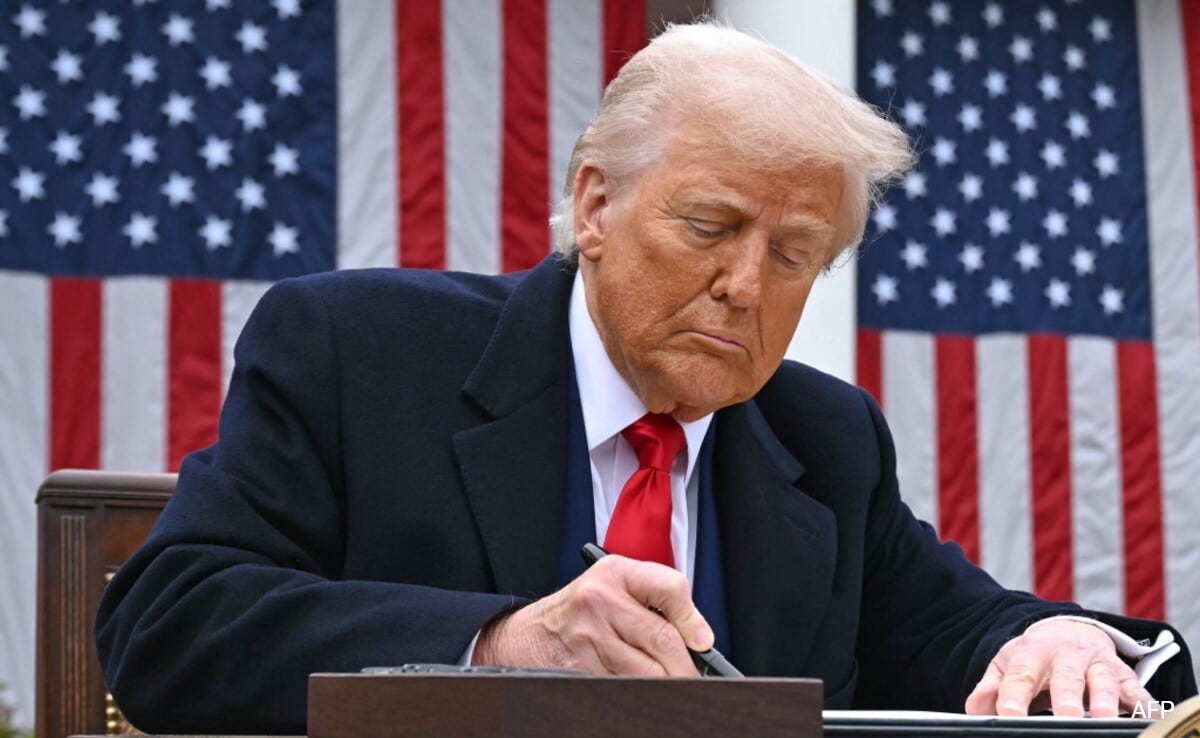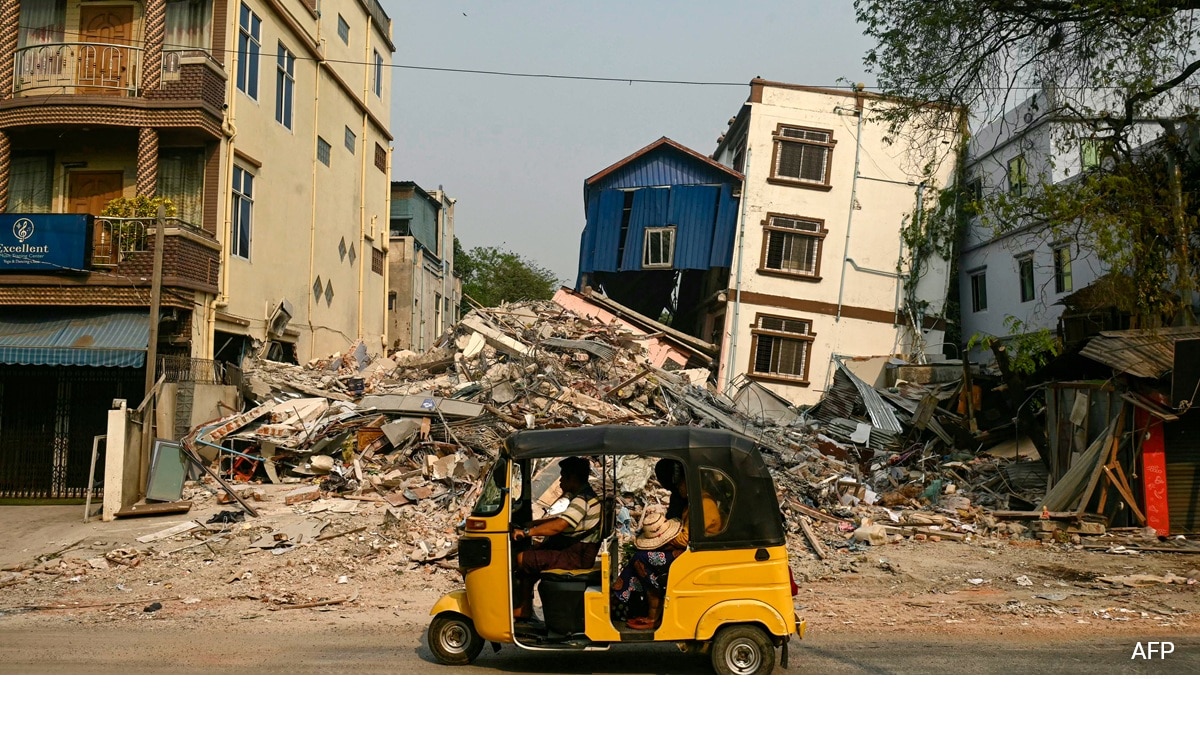“My fellow Americans, this is Liberation Day, waiting for a long time. April 2, 2025, will forever be remembered as the day American industry was reborn, the day America’s destiny was reclaimed and the day that we began to make America wealthy again.” These were the words of American President Donald J. Trump as he announced a string of reciprocal tariffs for countries, shaking up the global trade framework. The tariffs, he said, were in response to longstanding unfair trade practices by both friendly and unfriendly nations alike.
The effects of America’s ‘Liberation Day’ are only just starting to be seen. Markets in Asia are already tumbling. Gold prices have surged to a record high, approaching $3,200/oz as investors rush to hedge against economic uncertainty. The US President’s weaponisation of tariff regulations to reorient production, investment and distributive supply chains can end up overhauling trade relations between nations across regions.
A Tough Road For India
With respect to India, the newly imposed 26% duty on exports is likely to disrupt trade and rattle financial markets in both countries in the short to medium term. A recent report estimated that if the US imposed a broad country-level tariff of 25% on Indian imports, India’s GDP could take a $31-billion hit. This figure may be much higher now, given the indirect impact of tariffs on countries where American and Indian product supply chains are deeply interconnected. It will also cause prices of inputs and intermediate goods to rise, which will add to the cost of production. The most affected sectors in the Indo-American context are likely to be electronics, gems and jewelry and pharmaceuticals. All of this forms a crucial backbone of India’s rapidly growing export economy: in the case of smartphones, for instance, India contributes around 10% of US imports.
The new measures also include a universal baseline 25% tariff on all automobiles; India will be subjected to this too, regardless of any potential exemptions granted to it. Indian pharmaceuticals, which account for $7 billion in exports to the US and contribute to about 47% of America’s generic drugs, will see raised costs. Similarly, India’s $9 billion textile sector, which is again a labour-intensive industry, will struggle against cheaper competitors like Vietnam and Bangladesh, risking millions of jobs. The $8.58 billion jewellery export industry will lose its price advantage to rivals such as China and Belgium. Auto parts exports, valued at $2 billion, will face setbacks, which will disrupt supply chains for US manufacturers. Even IT services, which send almost $100 billion in exports to the US, are at risk of retaliatory measures that could destabilise India’s largest foreign exchange earner.
Tariffs Are Not New
While specific details about the implementation of these tariffs remain unclear, the broader picture reveals Trump’s unwavering commitment to protectionist policies. But is that approach new?
Much before Trump’s current theatrics on tariffs, former President Joe Biden’s own trade policy had increased the size and scope of the first Trump administration’s tariffs on Chinese imports. In fact, the Biden administration’s combination of tariffs and industrial policies to boost demand for American domestic goods and incentivise investment delivered the manufacturing boom that Trump keeps promising. It’s important to note how by 2023, the United States had the highest rate of investment in factories in 30 years.
As Lori Wallach recently argued, labeling tariffs as merely Trumpian is a mistake that Trump’s critics have repeatedly made in and outside the US. If you support a carbon border tax to combat climate change, or enforcement of labour standards in trade pacts, you support tariffs. And tariffs are, mostly, popular—even if not practical. “Shortly before the US presidential election, 56% of Americans favored increasing tariffs, with support among non-college-educated voters in Michigan, Wisconsin, and Ohio at 58%”, wrote Wallach. Critics have called Trump’s tariffs a ‘price-raising menace’—an ad-hoc, invisibilised tax burden on consumers—but one can’t help but almost appreciate his ways of misusing a policy tool.
Flashbacks From Trump’s First Term
What Trump did in his first term was reframe tariffs not as economic tools but as instruments of national revival, something that allowed him to renegotiate trade deals to work in American interests. In some ways, he is simply continuing now what he started then, but to a much intense degree.
Trump views trade deficits not as economic imbalances but as evidence of foreign exploitation. The measures launched by him in 2018 included 25% tariffs on steel and 10% on aluminum imports from multiple countries, including allies like Canada and the European Union. The centerpiece of this trade war, however, was China. By imposing tariffs on over Chinese goods worth $370 billion, the administration ignited a tit-for-tat trade war that came to reshape US-China relations. The tensions evidently culminated in the 2020 “Phase One” deal with China, which failed to meet its lofty purchase targets and left most tariffs intact.
Unlike previous administrations that focused on liberalisation and multilateral engagement, Trump treated trade as a zero-sum game. His logic was simple: if the US runs a deficit with another country, tariffs would be imposed. In his last term, he withdrew from the Trans-Pacific Partnership (TPP) on his first day in office and pushed for the renegotiation of NAFTA, resulting in the United States-Mexico-Canada Agreement (USMCA), a pact that demonstrated his preference for bilateral renegotiation over multilateral cooperation. The step was much more symbolic than radical.
Consequences, Consequences
Tariff wars, however, are costly, even if populist fervour may make people lose sight of that.
Several economic studies, including one from the Federal Reserve Bank of New York, have shown how tariffs disproportionately affected American consumers and businesses in the past. In Trump’s last term, the prices of retail and consumer goods skyrocketed, while importers struggled with uncertainty and shifting supply chains, with some relocating production to Mexico or Vietnam. Although this began as a battle over trade balances, it rapidly evolved into strategic decoupling, something that only became more layered and deterrent with time. US farmers faced collateral damage as China’s retaliatory tariffs devastated soybean exports, forcing the Trump administration to provide over $28 billion in subsidies. Farm bankruptcies spiked in several Midwestern states, though Trump did manage to retain strong rural support.
Ironically and most importantly, the overall US trade deficit widened during Trump’s last term, and the trade deficit with China, while temporarily shrinking, eventually rebounded, highlighting the limitations of tariffs as a long-term corrective measure.
In India—once a major beneficiary of the US Generalized System of Preferences (GSP)—the 2019 US decision to revoke its special status eliminated duty-free access for over $6 billion worth of Indian exports, particularly hurting small and medium-sized enterprises (SMEs) in sectors like textiles, auto parts, and leather.
Multilateralism To Bilateralism
Several US administrations in the past pursued global trade liberalisation through multilateral agreements. The Obama administration negotiated the TPP, a sweeping pact aimed at countering China’s influence in the Asia-Pacific alongside reducing tariffs among 12 Pacific Rim nations. However, opposition from both left and right killed US participation before ratification.
In contrast, Trump’s approach represented a paradigm shift: from multilateralism to bilateralism, from trade liberalisation to trade confrontation. And, Joe Biden’s decision not to dismantle Trump’s tariffs only reflected the political popularity of protectionism, even though the strategy was different. Biden emphasised reengagement with allies, modernisation of trade tools, and ‘friend-shoring’, encouraging US-based companies to move production to trusted allies rather than adversaries like China. He also approached protectionism in a different way: through ‘strategic investment’. For instance, his administration passed the CHIPS and Science Act (2022) to boost domestic semiconductor manufacturing and reduce dependence on China, Taiwan and South Korea. Similarly, the Inflation Reduction Act (IRA) was passed to support clean energy and reduce dependency on Chinese materials by conditioning subsidies on domestic production.
Economic Productivism
What all this signals is an American turn towards economic productivism, that is, a set of policies that enable a rise in productivity and ‘good’, secured jobs if pursued through a renegotiated trade policy. To what extent Trump can achieve this in his second term is yet to be seen, but there is precedent. Ronald Reagan pursued similar trade tactics against Japan (in reducing automobile imports from Japan to America using Quotas) at a time when Japanese cars were ruling the international market. His actions substantively brought Japanese automobile investments into the US, shaping the industry in the southern states.
Both Trump and Biden have used tariffs to cater to domestic constituencies, proving how deeply embedded they are in electoral strategies. Trump’s ‘America First’ policy, specifically targeting the Rust Belt where trade with China and globalisation had long been held responsible for the manufacturing collapse, was what got him into office for a second time—against Kamala Harris, whose stand on tariffs ended up costing Democrats a large section of working-class votes. Blue-collar workers continued to support his protectionist stance, disregarding evidence that retaliatory actions had adversely affected their economic well-being.
Protectionism, thus, is no longer limited to right-wing populism today, but woven into mainstream bipartisan politics. In an era of fractured alliances, tariffs have (unfortunately) become signals of distrust, punishment, and alignment—tools not just of economics but of power projection in a multipolar and multi-fragmented world order.
(Deepanshu Mohan is Professor of Economics and Dean at O.P. Jindal Global University. He is a Visiting Professor at London School of Economics and Visiting Research Fellow at Department of Asian and Middle Eastern Studies (AMES), University of Oxford. Ankur Singh and Aditi Desai contributed to the piece.)
Disclaimer: These are the personal opinions of the author







